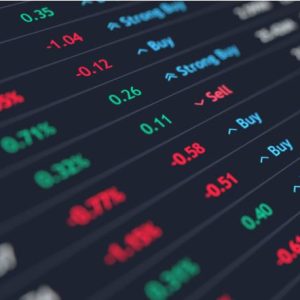Jean-Jacques Pluchart The research workshop organized on June 27, 2025 by the Institute of Psychoanalysis and Management (IPM), an academic association member of the FNEGE, gave rise to several communications on the theme of “gray areas of the management of organizations”. Professor J-J. Pluchart (Scientific Director of the IPM) presented research on the gray areas of financial and extra-financial communication, the results of which are likely to interest the readers of clubturgot.com. Since its inception, financial accounting has given rise to various frauds contrary to the regulations and standards in force, to which have recently been added so-called “creative” practices apparently aligned with an accounting framework, but in fact not in accordance with the ethics of the company. These behaviors are part of the “gray areas” of management, located on the border between the regulatory and non-regulatory domains. These practices have diversified with the obligation to publish sustainability reports, which requires the reporting of several hundred extra-financial indicators, both accounting and statistical, as part of ESG (Environment, Social, Governance) reporting. The accounting gray area has thus extended to practices relating to green and social washing, nudging, faking, etc. These deviations have been facilitated by certain applications – so-called projective – of Artificial Intelligence. The research, based on a questionnaire survey of a population of statutory auditors and trusted third parties, identified common practices observed in the grey areas covering accounting and sustainability reporting, as well as analyzing the motivations of their authors. The panel surveyed distinguishes between fraudulent manipulations contrary to regulations, which are a priori in “black areas”, and non-fraudulent manipulations contrary to professional ethics or company ethics, which constitute “gray areas”. The discriminating criterion that dominates the auditors’ responses is compliance or non-compliance with laws, regulations, and professional standards. Accounting and Extra-Accounting Practices The respondents distinguish: – Accounting fraud (“black areas”), such as the recording of fictitious transactions (sales, purchases, movements of stocks, receipts or disbursements…) and the issuance of false invoices; the non-recognition or recording of actual transactions that do not comply with IFRS standards (such as the activation of advertising or training costs); the falsification of accounting documents (invoices, contracts, certificates, labels…), the deconsolidation of subsidiaries in debt and/or in deficit; the failure to publish the company’s accounts or the publication of only pro-forma accounts; the early recording of income or delayed expenses from one year to the next… – Non-fraudulent accounting manipulations, such as the adjustment of discretionary accruals (optional allocations or reinstatements of depreciation and provisions) and/or the need for working capital; the application of the big bath technique during a change of management, by exceptional allocations of provisions that can be reinstated in the following years; the smoothing of results over several years in order to maintain a regular distribution of dividends, and/or to display results in line with forecasts; the change in the inventory valuation method in order to generate capital gains or losses; the activation of certain expenses (R & D, interest …) and their amortization over several years; the revaluation of certain assets (real estate, goodwill …) using models generating capital gains or losses (also cited by Chiapello, 2005); the unusual use of factoring or discounting to improve cash flow; the non-publication or partial publication of accounting results despite the risk of legal proceedings; the publication of “oriented” pro-forma results, in order to influence the course of the action; the manipulation of segmented information to guide comparisons between competitors in the same industry … – “Real accounting manipulations” (creative accounting), such as the artificial increase in sales through excessive year-end discounts and/or exceptionally favorable invoice payment terms; the deferral of expenses from one year to the next (including research and development and/or training expenses); the realization of lease back operations of various assets (headquarters, stores, warehouses, factories, equipment, etc.); the abnormal disposal of non-operating and/or investment assets… – Extra-financial manipulations, such as in black areas, non-compliant practices of disinformation, qualified as environmental (green washing) and social or societal (social washing) laundering, covering erroneous, imprecise or truncated data; in gray areas, non-information (some key data are omitted) or non-monitored information (companies display objectives but not results), and the biased framing of the company’s projects or operations: – over time, with simulations and projections (facilitated by AI) to present the most favorable or most credible data (such as net-zero or very long-term gender parity objectives without regular monitoring of achievements); – in space, with data (also processed using AI) not representative of a field, due to intentional targeting errors and/or biased parameters, ambiguities or textual inconsistencies, which lead to errors in data interpretation. Factors favorable to gray areas Overall, the auditors interviewed believe that it is increasingly difficult to isolate the types of more or less fraudulent manipulations, insofar as a growing number of them (misappropriation of assets, fraud in purchases or overheads, etc.) are internal or external while benefiting from internal complicity, and are the subject of increasingly difficult to detect hedging manipulations. Manipulations that are deemed to be in gray areas by auditors and ICOs (Informative Commissionner Officers), are generally observed when: – the company is over-indebted, its results are declining, its stock price is volatile and/or the continuity of its operations is threatened; – conflicts of interest between the company’s stakeholders (in particular between investors, partners, staff, the State, etc.); – the company’s shareholding is open and fragmented; the smoothing of the company’s results reassures its stakeholders about the company’s resilience; – the company’s image is less likely to be degraded if it complies with accounting rules but not or little with ESG standards, which are more recent and uncertain. According to the respondents, some managers therefore justify their intentions and behaviors by: – “good reasons”: the difficult or particular situation of the company justifies a “certain interpretation” of the rules and standards; – “professional routines”: “accountants have always practiced accounting and tax optimization, the new standard is inapplicable…” – “beliefs”: “non-information makes it possible to avoid green or social bashings; the superiority of the shareholder model, innovation
European industrial policies relaunched by the American isolationist shift
Jean-Jacques Pluchart By favoring competition, the Council and the Commission of the European Union have not engaged in a real industrial strategy in most sectors of activity, and in particular in those of production and electric mobility. This gap is revealed in particular by the new industrial ambitions displayed in these areas by the United States and China. The policy of technological neutrality applied by the 27 EU governments highlights their differences on the fundamental subject of the industrial competitiveness of the Old Continent. EU leaders have set mainly environmental objectives in certain sectors, without adequate regulation and financing. Thus, from 2020, the desired sharp reduction in CO₂ emissions has forced manufacturers to urgently convert to electric mobility, without sufficient mastery of technologies (particularly hybrids), sources of supply (batteries), recharging infrastructures, dedicated financing, accounting frameworks and training channels. In the absence of concerted directives, European car manufacturers have favored the production of high-end electric vehicles with very mixed success, while Chinese manufacturers have embarked on the mass production of small electric vehicles. It seems that the Parliament lacks industrial culture and the European Commission lacks experts capable of controlling the manufacturers’ lobbies. The “Draghi report”, made public in September 2024, denounced the European deficit of competitiveness over the United States and China in several key industrial sectors. The report recommends stimulating innovation, particularly in the field of artificial intelligence. It estimates the cumulative investment to be made over 10 years at €800 billion… the same amount as that allocated to defence by the “Rearm plan”. The “Draghi report” also proposed the launch of a joint plan for the decarbonization of industrial activities, security of supply and a reduction in Europe’s dependence on critical resources. The report extends its recommendations in particular to the hydrogen, space launchers and micro-nuclear sectors. It appeals to Europeans’ economic patriotism and urges them to overcome their divisions in the face of the pooling of sensitive resources, the orientation of investments and the taking of protectionist measures (in particular through ecological standards). But there are still some weak signals. Directly confronted with Chinese competition in the automotive sector, Germany has recently questioned its dogma of budgetary austerity, and has shown its willingness to build a sector dedicated to electric mobility. France anticipated this movement by committing in October 2021 to its “France 2030” plan, the objective of which is to strengthen the country’s industrial and technological sovereignty. With an investment envelope of €54 billion (half of which is dedicated to SMEs), this plan sets 10 objectives and activates 6 levers to support the transformation of the French economy, focusing on sectors of the future such as digital, hydrogen, batteries, space, health and decarbonisation. 14 of the 16 indicators are in line with the set trajectory. By the end of 2024, funding has supported 7,457 projects, 6,103 patent applications, and mobilized 196,824 jobs, including 156,009 jobs after project implementation, demonstrating their lasting impact. Several results have been made public in terms of GHG emissions, bio-drugs, new modes of transport, the electronics industry, robotics, new materials, quantum computers, hydrogen development and training in new technologies. The “France 2030” plan also aims to ensure the emergence, industrialization and growth of start-ups. More than €7 billion in aid has been allocated to support 925 projects and finance 130 venture capital funds by early 2025. However, as in most other European countries, the continued implementation of this plan involves harmonizing and simplifying the regulatory, financial and tax frameworks. Will Europe seize the opportunity offered by the global geopolitical reconfiguration initiated by the United States? The European Union has long favored a policy of competition rather than a real industrial strategy, which has left continental manufacturers relatively unarmed in the face of competitors benefiting from stronger state support. The difficulties of the electric transition, political hesitations, the lack of clarity of European directives and the need to develop a strong European industrial sector, including battery production, are the challenges ahead for the European electric mobility industry. Moreover, this is in an immediate context of great uncertainty related to recent announcements by President Trump. If Europe has in the past and until very recently refused to assume a strategic role to guide the development of a competitive industrial sector along the entire value chain of electric vehicles, as is happening in Asia and the United States, the situation may be changing. Especially under the German impulse. Bernard Julien is a lecturer in economics at the University of Bordeaux. Director of the Permanent Study and Research on the Industry and the Employees of the Automobile (Gerpisa) until 2015, he then founded a research firm, FERIA, dedicated to training, research and studies on the automotive industry. He explained to Techniques de l’Ingénieur the difficulty for Europe to assume a real industrial policy in the automotive field, and how this state of affairs could evolve with the current period. Techniques de l’Ingénieur: Can we really talk about a European industrial policy in the automotive sector? Bernard Julien: Not really. Historically, Europe has never implemented an explicit industrial policy for the automobile. More generally, Europe has never even implemented an industrial policy worthy of the name. Brussels has instead relied on a liberal vision, in the sense that the European institutions have allowed both competition to take its course between large European firms, and the industrialists themselves to decide their technological orientations.
France’s Digital Inclusion Plan
By Jean-Jacques Pluchart In April 2025, the National Productivity Council (CNP) published its 5th report entitled “A Changing World – Productivity, Competitiveness and Digital Transition”, which presents the opportunities offered to the French economy by a better contribution of digital technology. The report is structured in 3 parts: the evolution of productivity, the relative competitiveness of the country and the impact of new technologies on growth. Established in 2018, the CNP, chaired by Natacha Valla and reporting to France Strategy, is responsible for advising the government on economic policies related to productivity, assessing their effects and feeding the public debate. It shows that the ongoing transformations of the French economy are divided between short-term objectives and long-term structural imperatives. The experts note that in France, current labor productivity per capita is 5.9% below its pre-Covid level. Two-thirds of this drop in productivity over 5 years can be explained by transitory factors: apprenticeships, job retention in sectors facing a decline in activity, effects of workforce composition (higher proportion of lower-skilled jobs, etc.). The remaining third is due to a structural weakening of productivity in Europe. This lack of dynamism can only be stemmed by new investments – particularly in digital technology – and by a transformation of the production system. Employment growth alone cannot ensure the sustainability of economic growth. The report points to the still ambiguous role of digital technologies – notably GenAI and robotics – in the evolution of productivity. Their overall impact is perceived as insufficient in France, but there are indications that a catch-up is possible, provided that AI is more widely implemented in labor-intensive sectors and that workers are rapidly retrained. The report reveals that around 14 million French people, or 28% of the population, are not digitally literate, which is a real handicap in a context of increasing digitization of the world’s population. The experts estimate that a 10-year plan to digitalize 4.7 million French people could generate annual gains of 1.6 billion euros, in the fields of the digital economy, employment and training, relations with public services, social inclusion and well-being. The first area is the digital economy, which includes online purchasing and the collaborative economy. Developing the online purchasing capabilities of a third of the target population, via collaborative economy platforms, could generate purchasing power gains of around €450 million a year. The second area concerns employment and training. Overall, Internet use has a positive impact on the educational success and qualification levels of the French population. This would generate annual savings of around 130 million euros. The third area is the relationship with public services, and in particular online administrative procedures. A digital inclusion plan would generate annual savings of 150 million euros. Fortunately, the latest indicators show some improvement in European competitiveness, particularly in manufacturing. In 2023 and 2024, the reduction in France’s trade deficit was accompanied by a recovery in its export market share. Competitiveness has also benefited from a relative drop in real wage costs. However, overall, French labor costs remain higher than the eurozone average, particularly in countries such as Spain and Italy. Recent cost rises in business services and freight costs could rapidly call into question the gains observed. Non-price competitiveness remains an issue, as French intermediate, investment and consumer products are often perceived as too expensive in relation to their quality. Further increases in labor and transport costs could once again weigh on price competitiveness. France therefore has two strategic choices: to focus on innovation to improve productivity and strengthen non-price competitiveness, or to control labor costs to maintain its competitiveness on international markets. France lags far behind the United States in terms of technological investment, and this deficit could have a lasting impact on potential growth. The Draghi report (2024), which calls for a stronger European framework to stimulate economic growth, is a good example of this. France lags far behind the USA in terms of technological investment, and this deficit could have a lasting impact on potential growth. The Draghi Report (2024), which calls for a stronger European framework to boost competitiveness through innovation (1), underlines this urgency. In the CNP’s view, only a strategy of investment in digital technology, driven by both national industrial policies and European directives, could be one of the levers of tomorrow’s productivity, employment and economic sovereignty. (1) The first effects of the “Draghi report” will be presented in the next blog.
The new forms of economic patriotism
Jean-Jacques Pluchart* Since the accession of Donald Trump to the presidency of the United States, economic patriotism has invited itself into the current debates animating all nation-states. These exchanges reveal not only the polemical nature but also the polysemous nature of the term economic patriotism, often equated with that of economic nationalism. It is true that these notions have been embraced by sometimes opposing schools of thought, and that they still lack a solid scientific foundation. Their perceptions differ according to the political opinions and states of mind of different social groups. Economic patriotism is distinguished from economic nationalism by its nature: the former reflects a rather defensive sentiment (attachment to a country and defense of its economic equilibrium), while the latter covers an offensive ideology (the quest for the economic supremacy of a nation-state). The former enjoys a generally positive image, while the latter suffers from rather negative prejudices, notably inherited from the history of the 20th century. Economic patriotism is therefore a less confrontational concept than economic nationalism. The current resurgence of economic patriotism is mainly driven by the need to rebalance trade balances and alleviate the foreign debts of certain countries, such as the United States and France. In some countries, such as France and Italy, it is justified by the need to reduce unemployment by promoting local production, and to combat inequalities of income and wealth between citizens. It is also explained by consumers’ growing expectations in terms of respect for human rights, public health and environmental protection, which justify their demands for worker protection and product traceability. In Europe, demonstrations in favor of a return to protectionism, deglobalization of trade, relocation of factories, deconsumerism, etc., have been relaunched since the 2000s and relayed by official declarations and reports (notably the Draghi and Carayon reports). On the ideological front, polemics about economic patriotism pit defenders against opponents of free trade, and federalists against sovereignists. Economic patriotism is denounced by the former as provoking “trade wars”, and by the latter as engendering unfair globalization of trade. Some see it as an alternative to the cosmopolitanization of societies and the globalization of economies – which generate unemployment and inequalities in Western countries – while others see it as a factor in the contraction of trade and the slowing of growth of societies and the globalization of economies – generating unemployment and inequalities in Western countries – but represented by others as a factor in the contraction of trade and the slowdown of growth. These debates have been rekindled by the contestation of the latest international trade agreements (such as CETA and TAFTA) and the one-upmanship (the tit for tat theorized by Axelrod) between states, illustrated in particular by the threat to raise US tariffs on Chinese imports, countered by the devaluation of the Chinese yuan. The paradoxes observed in current discourses on trade help to shed light on the nature of contemporary economic patriotism and explain its revival. It responds to the main forces transforming international trade: globalization and the integration of production chains, financialization and the digitization of transactions. It meets the founding criteria – political, social and cultural – of patriotism. It mobilizes all the stakeholders in each nation-state, and concerns its material, immaterial and financial resources. It calls on an ever-expanding arsenal of customs, tax and regulatory practices and instruments, borrowing from hard, soft and rough laws, traditional negotiation methods and social networks. It embraces both state and spontaneous patriotisms, and is a source of great satisfaction to our customers. It draws on an ever-expanding arsenal of customs, tax and regulatory practices and instruments, borrowing from hard, soft and rough laws, traditional negotiation methods and social networks. It encompasses patriotisms that are both state-sponsored and spontaneous, defensive and offensive, flexible and variable-geometry. It requires an appropriation of the territory that combines a global approach with local roots for economic exchanges. It is part of a process of “glocalization” of exchanges, exploiting both global and local resources. It strives to reconcile local, national and universal solidarity. The emergence of new forms of economic patriotism relies on States guaranteeing national sovereignty, citizens respectful of universal values, companies concerned with correcting the negative externalities of their activities, and consumers aware of the effects of their purchasing behavior. Respecting these conditions should help preserve the socio-economic equilibrium of nation-states and the social, societal and environmental of XXI th century. *inspired by J-J. Pluchart, « Les nouvelles formes du patriotisme économique », chapitre in C. de Boissieu et D. Chesneau (dir.), Le patriotisme économique a-t-il un sens aujourd’hui ?, Eds Maxima, novembre 2020.
The economic utility of public debt
Clearly distinguish the public deficit from the debt The public deficit results from an imbalance in the day-to-day management of the State budget. The latter spends beyond the resources at its disposal. However, these resources are essentially made up of taxes levied on household and business income. These resources are certainly voted by the national representation and socially accepted, but they depend on a legal constraint and would suppose at least, the exercise of a rigorous management at least equivalent to the power of coercion from which they originate. Also the creation of a permanent public deficit reflecting the excess of expenditure over current revenues constitutes in fact the establishment of a right of withdrawal on the future income of citizens without their consent. In this sense, beyond the principle of accounting balance, the public deficit poses a democratic problem. The current presentation of the State budget does not allow for a clear and comprehensive distinction between operating and investment accounts and does not link investment revenues to any prior constitution of savings to cover at least the annual depreciation of borrowed capital. And it would be necessary for the State to apply to itself these rules of balance and savings, scrupulously observed by local and territorial communities. This does not prevent the latter, despite the increasing financial constraints imposed by the State, from maintaining local public services as best they can and representing more than 70% of public investment. Apart from the possible lags related to the uncertainty of the annual forecast of revenues and expenditures, the operating budget deficit should only be marginal and cyclical… The issuance of treasury bills serving as a cash instrument. The legitimate question that the State budget deficit must raise, particularly in France, must not distort the issue of public debt. Under no circumstances can the budget deficit be considered as the cause or explanation of public debt. Public debt is not a constraint resulting from poor budget management but remains primarily an economic tool. The merits of public debt Indebtedness consists of mobilizing funds, beyond one’s immediate capacity, to finance useful investments when it comes to states and households or profitable ones when it comes to businesses. This mobilization of funds, made available, presupposes the existence and agreement of lenders who have savings to invest in the more or less long term and implies in return the repayment of the advanced funds plus interest, according to a negotiated schedule. The use of debt by States therefore corresponds to that economic moment when the savings of agents in excess of resources are transformed into collectively useful investments. For example, a hot topic of the day, European states will borrow to invest individually and collectively in strengthening their defense, that is, in the security of their citizens. It should be noted that the same approach could be used to invest in the ecological transition of the European economy. In any case, these investments, made possible by the mobilization of the loan, will contribute to the revival of the economic sectors concerned and to the emergence of new activities. They will create wealth and in return allow new tax revenues. As we can see, the indebtedness of States and the benefits of the investments they generate can only be assessed over time. The relevance of public borrowing will be seen in return by the progressive increase of a service and wealth, like private investments made by companies that measure the profitable effects in the long term. The question of assessing public debt Public debt is commonly evaluated as a percentage of GDP. Note that this compares a stock: the outstanding debt; with a flow: the economic value created during the year. This is statistically questionable. What’s more, the establishment of this relationship constitutes economic nonsense. How can borrowing be useful if it has to be paid off in full in a single year of national wealth creation? As we have just pointed out, the reason a government takes on debt is to increase its capacity to finance investments whose effects can only be seen over time. It’s also worth noting that the level of debt measured in this erroneous way has never undermined the economic capacity of states: England, the leading economic power in the 19th century, had a level of outstanding debt equivalent to 170% of its GDP; the United States will be at 120% of GDP in 2024; China, according to its official figures, is close to 126% of GDP, and France 113%…. The enigmatic rule urging European countries to limit their debt to 60% of GDP has no economic justification whatsoever, other than to restrict their investment capacity at a time when raising funds through borrowing is becoming essential. The economic measure of a country’s debt burden should be calculated over a number of years, on the basis of its capacity to pay off its debts in terms of The economic measure of a country’s debt burden should be calculated in terms of the number of years it will be able to pay off its debt in relation to the renewal of its GDP. This measure is obtained by dividing two flows, statistically comparable quantities: GDP by the annual amount of capital amortization plus current interest. Thus, if France were to roll over its 2024 GDP, it would take around 5 years to pay down its debt in principal and interest, which is less than the average duration of its indebtedness. The duration of public debt It’s not uncommon to deplore the fact that public debt is a burden for future generations. But this is to misunderstand the average duration of public debt, which is 6 to 8 years. This means that one and the same generation will experience around ten renewals of government debt, which leaves plenty of time to reduce the debt burden, if necessary, and to place the burden on the same generation. The debt renewal technique of replacing matured loans with new ones, using financial hedging techniques,
The European Net-Zero Industry Act and the French Solar Pact
The European Union, in a clear desire for energy transition and industrial sovereignty, is deploying the Net-Zero Industry Act (NZIA), an ambitious initiative adopted in June 2024 as part of the Green Deal Industrial Plan. This text aims to strengthen the production of clean technologies in Europe, while responding to the American dynamics of the Inflation Reduction Act (IRA). The objectives of the NZIA are clear: to meet 40% of European needs in clean technologies by 2030 and to represent 15% of global production by 2040. Priorities include key sectors such as hydrogen, solar photovoltaics and carbon capture technologies. This initiative is part of an industrial competitiveness strategy, while accelerating the energy transition and reducing carbon emissions. To facilitate this transformation, the NZIA introduces a simplified procedure for the approval of industrial projects related to Net-Zero technologies. The timeframes are considerably reduced: 12 months for projects under 1 GW and 18 months for those exceeding this capacity. An ambitious national strategy: the French solar pact France, for its part, is actively investing in the development of its solar capacities. Between 2020 and 2024, solar installations increased from 2 GW to 3.3 GW, but the country is still far from the government’s target of 6 GW per year. To achieve this target, the solar pact provides for a stronger mobilization of public and private resources. As early as 2025, ESG (Environment, Social, Governance) criteria will be introduced in public procurement, with an incentive bonus for projects using solar panels manufactured in Europe. A strategic tax credit launched in March 2024 is expected to generate €23 billion in direct investment and create 40,000 jobs in the French photovoltaic sector. Greening public procurement From 2025, public contracts exceeding €25 million will have to meet strict requirements: no product originating from more than 50% of third countries will be able to be integrated. This measure aims to reduce dependence on foreign imports, while stimulating local production. However, the current low European production capacity could pose challenges. Strengthening the competitiveness of local manufacturers and accelerating industrial production of solar panels will be priorities to avoid a supply disruption. Financial challenges Although the NZIA encourages private investment and mobilizes existing public funds, project financing remains a major challenge. Current European resources, such as the Horizon Europe program or the Just Transition Mechanism, appear insufficient compared to the massive amounts invested by the United States via the IRA. However, a possible dismantling of the IRA under a new US administration could open a window of opportunity for Europe, allowing it to strengthen its capacities in a redefined international context. Building energy sovereignty European actors in the solar industry are organizing themselves to meet these challenges. Their commitments include the promotion of a solar panel performance index called InduScore, the signing of long-term contracts to secure the supply and deployment of at least 30% InduScore certified panels by 2025. However, China’s dominance of the global photovoltaic market remains a major obstacle. China’s industrial capacity, which far exceeds European needs, continues to pose a significant challenge to European energy sovereignty. Conclusion: Ambitions to be realized The Net-Zero Industry Act and the French Solar Pact are key levers to enable Europe to meet its climate and energy targets. However, several challenges remain to be overcome: securing sustainable financing, reducing dependence on imports and accelerating local production. The success of these initiatives will require close coordination between European institutions, national governments and private actors. In France, the Solar Pact offers a unique opportunity to position the country as a European leader in solar energy. To achieve this, these challenges will have to be met with an ambitious vision, a stable regulatory framework and adequate financial resources. Chronicle by Benoit Frayer
The container ecosystem in the face of trade deglobalization
On April 26, 1956, Malcolm McLuhan, a service station manager, loaded the first commercial container in the port of Newark. This container revolutionized the transport of goods by interoperable routes, whether by sea and river, air, rail and road. This basic building block of industrial logistics has made it possible to build a supply chain that has been deployed on a global scale. This system has caused a real “creative destruction” in the various logistics trades (dockers, crane operators, carriers, traders, etc.), but also in shipbuilding, aeronautics and the automotive industry, as well as in civil engineering (roads, quays and docks). This vast redeployment was driven by the search for economies of scale, productivity gains, standardisation of transported products, a drastic reduction in transport costs and better security of exchanges. These advances, combined with lower customs duties, have made it possible to globalise and intensify trade between continents, countries and regions. Container flows have fluctuated in line with economic growth rates and free trade agreements. They have prospered despite criticism denouncing job losses, shipwrecks and road accidents, as well as water and air pollution. This universal logistics network was partially disconnected during the Covid period and it risks being redeployed and partially disabled by the slowdown in trade that will result from the increase in customs duties decided by the new US presidency. This return to protectionism will probably reactivate industrial projects and social movements in favor of local transport modes, the revival of river navigation, multimodal rail-road transport, bulk distribution, the relocation of production and the organization of production on a just-in-time and zero-stock basis, and in general, the shortening of the supply chain… The logistics of tomorrow are conditioned by the results of the (perhaps ephemeral) American experiment of “deglobalization” of world trade, but the current logistics infrastructures, based on the container ecosystem, should persist by adapting to the specific needs and constraints of transport and storage of industrial and commercial activities. The question is therefore perhaps less to think about the logistics that “we want for tomorrow”, than about the logistics that are still “possible for tomorrow”. Note by Jean-Jacques Pluchart
How to reindustrialize France
Column by Jean-Jacques Pluchart After 40 years of de-industrialization, the subject of “reindustrialization” has been making a comeback in public discourse, since 2009. Several initiatives have been taken by successive governments: the States General of Industry, the Gallois report on industrial competitiveness, France Relance, France 2030. The Lluansi Report In November 2023, the Ministry of Economy commissioned Olivier Lluansi, former interministerial delegate for Industrial Territories, to carry out a mission on the re-industrialization of France by 2035. His conclusions have not ultimately be made public, but they have been presented in a book analyzed by the Turgot Club (see clubturgot.com). The report reveals that France is one of the most de-industrialized countries in Europe and ranks among the lowest one in the European Union, ahead of Greece. The 10% share of GDP covered by industry has stagnated at 10% since 2009 and can only reach 12-13% by 2035. France would ensure at least a balanced trade balance on manufactured goods. To stem the €60 billion annual deficit, he advocates the creation of 60,000 industrial jobs per year, three times the 20,000 industrial jobs created per year in recent years. He notes that “50% of people trained in industrial trades will do something else”. According to the report, the industrial recovery presupposes a patriotic leap and a more massive recourse to public order. The “Made in France” is an under-exploited lever; it could bring in €15 billion more per year, or 25% of the trade deficit in manufactured goods. The report also recommends not to concentrate resources on breakthrough innovations and gigafactories, which represent only 20 to 30% of the re-industrialization potential, when SMEs and mid-caps make up two-thirds. This industrial fabric in the heart of medium-sized cities needs public support to regenerate. Re-industrialization also implies to reduc the depenedence of French supply chains and freeing up land, while remaining Climate Law compliant, which sets a target of zero net artificialization by 2050. The White paper “Everyone can make French industry shine” The Les Influstriels collective, which aims to promote the attractiveness of the French industry, published a White paper in December 2024 entitled “Everyone can make French industry shine”. It reveals that “83% of French people have considered it to be in decline for several years”. The authors question why the industry suffers from such a negative image. They note that France has many startups and SMEs engaged in new technologies and sustainable economies – including decarbonization – but that they lack public and private funding. However, since the green industry law, the French can participate in the ecological transition and rei-ndustrialization in various ways: life insurance, a Pension scheme (PER), private equity funds… In September 2024, Bpifrance launched the BE3 private equity fund, the 4th product of its retail range, accessible to the French from €500. In 2024, the government also launched the “turnkey sites-France 2030” system, selecting 55 industrial sites from around a hundred applicants. This system allows project leaders to access land in the short term, and allows developers and local authorities to enhance the value of the labelled sites. According to the Minister of Ecological Transition and Territorial Cohesion, the number of applications received from local authorities, private companies and various organizations, reflect an advance in reindustrialization. “France 2030 turnkey” sites have been created to accelerate the installation of factories. These sites will be decontaminated, equiped with access roads, connected to utility networks and will benefit from accelerated administrative procedures. With this concept, the government wants in particular to reduce the duration of industrial installations from 17 months on average to 9 months. The sites were chosen according to 5 criteria: economic attractiveness – location, accessibility, transport axes, employment area, differentiating ecosystem; limited environmental impact – land sobriety and rehabilitation of brownfield sites; site maturity – potential by 2030; relevance of the project to be integrated into the territory; land control of the site. The France Foncier+ portal already lists more than 600 sites available or in the process of being made available. The redevelopment of brownfield sites has become one of the priorities and land recycling appears to be a key measure, which falls within the context of the law on green industry. The 55 sites are spread over the entire territory, but if all the regions are represented, there are 1 to 8 sites per region, the best endowed being the PACA region, with 8 sites, followed by Normandy (7); Occitania and Île-de-France (6 each). The size of the chosen sites is very variable, since there are projects of 3 ha as well as 340 ha, the challenge being to give oneself the “means to attract all projects, from the industrial SME to the gigafactory.” [1] Olivier Lluansi, “Réindustrialiser, le défi d’une génération”, éditions La Déviation, 2024.
Gross Domestic Product and CO2 Growth: Reflections on Kaya’s Identity
Column by Sophie Friot Literature and studies on energy and ecological transitions regularly address Kaya’s identity, analyzing the human impact on the climate and understanding the link between changes in gross domestic product and carbon evolution. It would be too simple to correlate gross domestic product (GDP) increase with carbon growth, suggesting that the solution to rising greenhouse gases would simply be « de-growth ». This equation is a “tool” used in many research projects to better identify the levers to move towards an economically sustainable and less carbon-intensive world. It is used by the Intergovernmental Panel on Climate Change (IPCC) and the International Energy Agency, among others, to analyze changes in CO2 emissions from fossil fuels. This concept refers to the Japanese economist Yoichi KAYA, who specializes in energy and the environment, and wrote in 1993 his book : “Environment, Energy, and Economy: Strategies for Sustainability”. More than 30 years ago, it demonstrated that the increase in energy consumption associated with economic development can vary by population level, energy sources, and regions (Western versus developing countries). It is defined as follows: The energy intensity component of gross domestic product is the amount of energy required to achieve a result or a production. In Western countries, the energy intensity of the economy has followed a downward trend since the beginning of the industrial era. The sharp decline was caused after the two oil shocks by the development of nuclear energy and renewable energies. Notably, the decrease in energy consumption being smaller than the temporary drop in gross domestic product resulted in the anomaly of the 2020 health crisis period when energy intensity rebounded upwards. Another component of the equation, closely related to the previous one, is the carbon intensity, as the share of CO2 in total energy consumption. Carbon intensity has followed the same trend since the early 20th century with the increasing weight of oil and gas in the mix, which emit less CO2 than coal ; the movement has accelerated since the 1980s with the rise of nuclear and renewables, such as wind or photovoltaics. Following the effects of the 2 oil shocks of the 1970s, developments in gross domestic product and energy consumption needed to be separated. In this case, we are talking about: – Partial decoupling when emissions grow less rapidly than gross domestic product – Absolute decoupling is when emissions decrease while gross domestic product increases, which means green growth. With Trump making shale oil and gas a priority and China still relying on coal for the majority of its energy production, there is still scope to achieve full and global decoupling to meet Net Zero Emissions targets by 2050. In conclusion, let us remain optimistic because, without total decoupling, partial decoupling is possible by levers such as: – Improvement of technologies in construction – Energy renovation of buildings – Electrification of transport – Progress towards a less carbon-intensive energy mix: development of renewable energies and reduction in the use of coal in fossil fuels. In Germany, the closure of the remaining nuclear power plants has not curbed the decline of fossil fuels, such as lignite, in the face of the development of renewable energies.
THE ADVENT OF NON-FINANCIAL AUDITING
Jean-Jacques Pluchart The new European CSRD directive, published on December 16, 2022, constitutes a significant step forward in the practices of managers – in particular CFOs and CSR managers -, but also in the professions of accountancy and law. The CSRD directive will gradually impose “sustainability reporting” on all companies (excluding micro-enterprises) according to a staggered timetable from the reference years 2024 to 2028. The data published by the companies will have to be audited and certified by independent third parties (the PSAIs) including specialized compliance control firms, lawyers and auditors specially trained in the various disciplines (technical, legal, accounting) mobilized by CSR and sustainable development. These auditors, supervised by the French Audit Office (H3C), renamed the French Audit Authority (H2A), may be assisted by Chat GPT-type applications, informing them of the rules, standards or markers applicable or observable in the main sectors of activity. A few months later, on June 26, 2023, the ISSB, created in 2021 at COP 26, published two initial climate standards (IFRS S1 and IFRS S2) applicable internationally. The two repositories have notable differences. The sustainability reports published by European companies will display indicators divided into 4 types of ESG standards (cross-cutting, environmental, social and governance) and 13 sustainability standards (ESRS). While the European Union had aligned itself with the Anglo-Saxon financial accounting standards (IFRS), the European extra-financial framework (CSRD) differs from the American (RCRD) and international (ISSB) frameworks. The Commission recommends the application of dual materiality, both financial and material, of the “impacts, risks and opportunities” resulting from the activities of companies, while the Anglo-Saxon standards are limited to financial issues. The European approach has multiple implications: How to anticipate and measure the risks incurred by the company and its ecosystem? How to identify and classify the internal and external stakeholders included in the value creation chains of companies? How can we map the interactions between the company and its various stakeholders? How to detect and weigh their impacts, risks and opportunities? How can they present their strategies and business models concisely without revealing certain projects or business secrets? How to define the roles and responsibilities of the various governance and management bodies involved in achieving the 17 Sustainable Development Goals (SDGs) set by the Paris agreements in 2015? How can we ensure the traceability of the sources and the validity of the measures of the global and specific impacts, positive and negative, induced in the short, medium and long term by the activities of companies and their stakeholders, within the perimeters of their ecosystems? What metric should be adopted to make the indicators robust and comparable? How can the report be made understandable by the multiple actors and observers of the companies’ activities? How can indicators be made comparable between companies in the same sector and/or territory? How can all the indicators within the same group be weighted, aggregated and consolidated? The drafting of sustainability reports in accordance with the CSRD, which will replace the DPEF, raises issues that require the mobilization of managers, accountants, financiers, academics and experts from various disciplines, whose coordination falls under Impact, Risk and Opportunities (IRO) Management. This new mode of strategic and operational management of the company is still in its learning phase, because its concepts and models are not all stabilized and its implementation is the subject of debate in professional and scientific circles. Analyses of the NFPRs of French companies carried out in particular by the Autorité des Marchés Financiers (AMF) and by extra-financial rating agencies show that company data is not always sufficiently traced, monitored over time, and comparable within the same sector of activity. Last but not least, the application of the new CSRD standards should make public the strategic thinking process that was previously the domain of shareholders and company managers. This transparency should lead to the limitation of green and social washing and the revision of certain founding paradigms of management.















